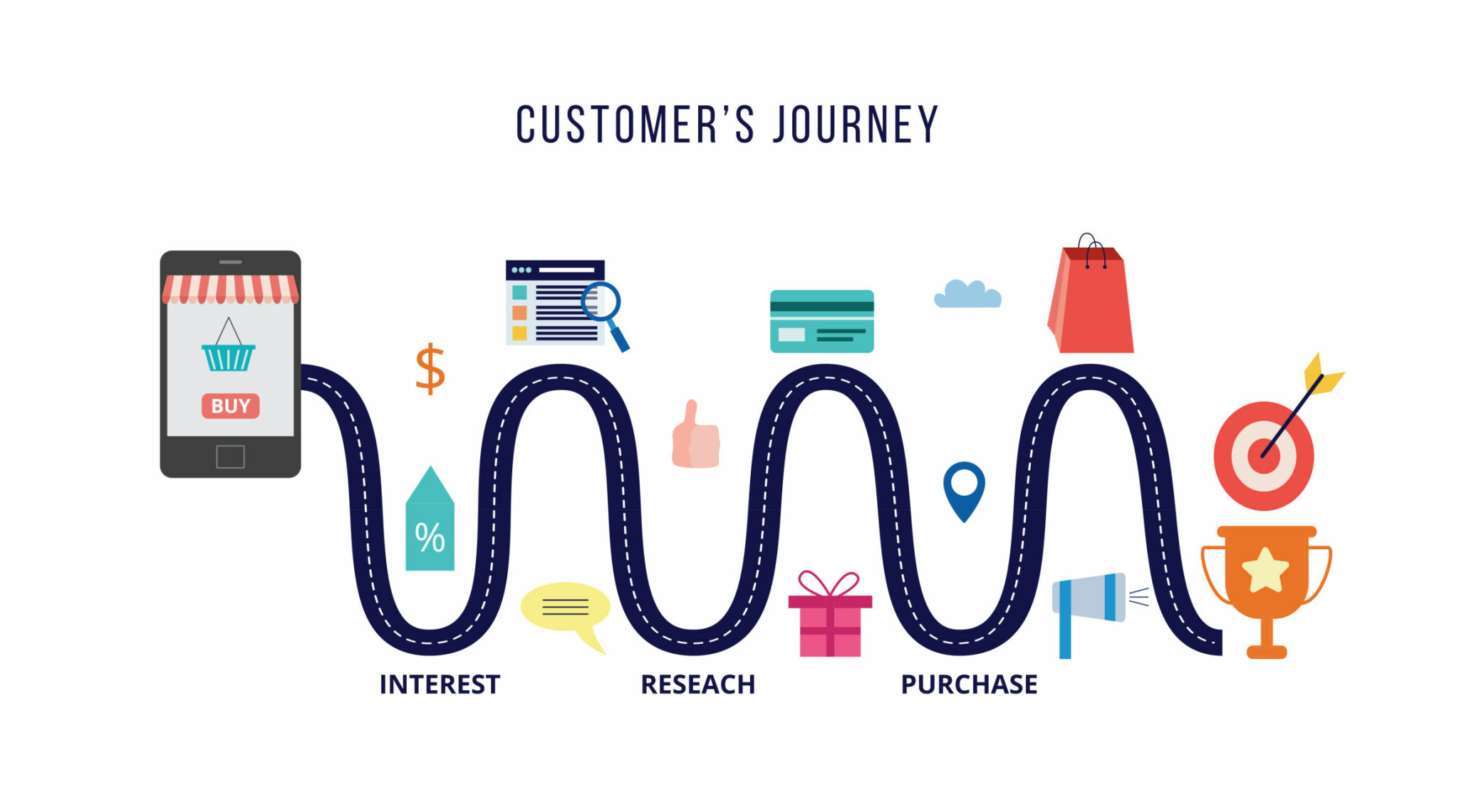Potential customers visiting your website peruse your offer by reading the content. This increases the probability that they will make a purchase. Therefore, creating a content maps that is useful, interesting, supports, and appeals to your desired audience is essential.
Nonetheless, preparing the website’s content is essential to developing an efficient website, and you must adopt content mapping if you still need to.
Furthermore, research also says that if you have a content map that is well-organized and structured, it will show that your potential customers will not only engage with you but also buy your items once they have carefully read the offer that most accurately describes their requirements.
In addition, content mapping is an excellent tool that may assist you in strategizing and visualizing the structure of your website, which is necessary to ensure a consistent and positive user experience.
This post is for you if you are new to content mapping or have an unsatisfactory conversion rate. In this lesson, we will discuss the concept of content maps and provide an instructional guide on how to develop them to plan the content of your website.
What Is Content Mapping?
The best way to explain the content mapping process is to think of it as formulating a content map that addresses the unique requirements of each potential customer at each stage of the purchasing process. Every bit of content included in a content map is to satisfy the requirements that your prospects will have at a particular stage on their journey toward purchasing your goods and services.
Why Is Content Mapping Important?
- Each section of content you have on your website helps express your brand’s goals efficiently that speaks directly to the pain areas your prospects are experiencing, and as a result, your business generates more leads.
- It raises the conversion rate while simultaneously decreasing the low bouncing rate.
- Content mapping enables you to form relationships with your potential customers, thereby enhancing the credibility of your business.
How To Create Content Mapping?
Understand Content Map
The first step is to understand the content map itself; a content map, also known as a content outline, is a visual representation of your website’s structure and hierarchy. It outlines the pages, sections, and relationships as a blueprint for organizing your content. Content maps provide a holistic view of your website and help you identify gaps, overlaps, and opportunities for improvement.
Define Your Website’s Goals
After you have understood content mapping, clarify your website’s goals and target audience immediately. In addition, Identify the key messages you want to convey in your content and the actions you want your prospects to take. These will make your objectives plain and help you tailor your content map accordingly.
Identify the buyer persona you want to target
Buyer personas are generalized illustrations of the types of buyers you want to attract. They assist you in better understanding your prospects and make it simpler for you to modify your material to the particular requirements and behavior patterns your prospects exhibit.
The most effective buyer personas are through findings from market research and insights from actual prospects through various methods such as questionnaires, interviews, etc. Depending on what you do, you may only need one or two people to run your company.
Brainstorm persona questions for unconcerned prospects.
The people who fall into this category have only recently become aware that they have a problem. Consider how your material can help individuals get more knowledgeable about the issue in general at this point, and you’ll discover that they continue moving closer and closer to deciding whether or not to make a purchase.
Think for them by asking questions such as how you can assist them in identifying their needs and coming up with a solution plan or strategy.
Carry out an Examination of the Content
Conduct a thorough content analysis to examine your already-existing content and locate gaps in between. While doing this, consider the questions your buyer personas have asked; you can turn these questions into subjects for your awareness stage content.
Instead of going directly into material centered on products, the information you want to present them should speak to the needs they now have. Examine the material of your existing website and organize it into general categories, such as topics or themes. Find out which material content should be reused, which needs to be updated, and which needs to be replaced with new ones.
Identify Pages and Sections
Identify the core pages and sections crucial for your website based on your goals and content audit. These may include the home page, about, products/services, blog, contact, etc. Create a hierarchical structure, placing the most important pages at the top and branching out to subpages.
Map Out Relationships and Navigation
Establish relationships between pages and define the navigation flow. Consider the logical progression of information and how users navigate your website. Ensure the content flow is intuitive, and your prospects can easily find what they seek.
Incorporate Keyword Research
Include keyword research into your content maps to optimize your website for search engines.
Identify relevant keywords for each page and section and strategically place them in your content. This will help improve your website’s visibility and attract organic traffic.
Visualize Your Content Map
Visual tools such as mind mapping software or flowchart diagrams represent your content map visually. Include page titles, URLs, and brief descriptions for each page. This visual reference will make communicating and refining your website’s structure easier.
Refine and Iterate
Review your content map and seek feedback from stakeholders or colleagues. Make adjustments and refinements to ensure the map accurately represents your website’s content structure. Content mapping is an iterative process, so be prepared to make revisions as your website evolves.
What Are the Benefits of Content Mapping?
Implementing content mapping in your website planning process offers numerous benefits. Let’s check through:
Enhanced User Experience
Content maps help create a seamless user experience by intuitively guiding visitors through your website. With a well-structured content map, users can easily navigate between pages, find relevant information, and accomplish their goals efficiently.
Improved SEO
Search engines value well-organized websites with clear content hierarchies. Content maps enable search engine crawlers to understand the structure of your website, leading to better indexing and improved visibility in search results. You can strategically optimize your content for relevant search queries by incorporating keyword research into your content map.
Streamlined Content Creation
Content maps serve as a roadmap for content creation. They provide a comprehensive overview of the required pages, sections, and topics, making planning and creating content that aligns with your website’s goals more accessible. Content creators can refer to the content map to ensure they cover all essential information and maintain consistency throughout the website.
Efficient Website Maintenance
As your website grows and evolves, content mapping becomes invaluable for maintaining and updating your content. With a clear structure, you can quickly identify outdated or redundant content and make necessary updates. Content maps also help you identify gaps in your content strategy and fill them accordingly.
Scalability and Future Planning
Content maps allow you to plan for the future and accommodate future expansion or additions to your website. You can instantly identify areas by visualizing your existing content’s structure and relationships. This scalability ensures your website can grow and adapt as your business or organization evolves.
Content Mapping Tools
Remember that the choice of the content mapping tool depends on your specific requirements, preferences, and the complexity of your website. You may find that a combination of tools works best for your needs.
Mind Maps
Mind mapping tools like MindMeister or XMind allow you to organize and connect ideas visually. They can create a hierarchical structure for your website’s content, showing relationships between pages or sections.
MindMeister offers a free version for creating up to 3 mind maps. After that, you need to upgrade to its premium plans per month.
Flowcharts
Flowchart tools such as Lucidchart or Gliffy enable you to create diagrams that illustrate the flow of content within your website. They help map out user journeys, navigation paths, and content sequences.
Lucidchart allows a free version; afterward, you subscribe to a paid version, either individual, team, or enterprise.
Spreadsheets
While not explicitly designed for content mapping, spreadsheet tools like Microsoft Excel or Google Sheets can help create content inventories and organize information. You can create columns for page titles, URLs, keywords, target audiences, and other relevant data to map your website’s content.
You can use Google Sheets for free on your Google account, and to enjoy the app, you need to subscribe to a paid version, either basic, business, or enterprise.
Visual Sitemaps
Visual sitemap tools like Slickplan or Dynomapper provide a graphical representation of your website’s structure. You can create a hierarchical view of pages and their relationships, making planning and navigating your content more accessible.
Of course, the slick plan has a free version, but subscribe to the paid version to save you the hard work.
Content Management Systems (CMS)
Some CMS platforms, such as WordPress or Drupal, offer built-in content mapping features. These tools allow you to create and organize content within the CMS, often using a hierarchical structure or drag-and-drop interfaces.
Wireframing and Prototyping Tools
Tools like Balsamiq or Sketch are for wireframing, prototyping, and content mapping. You can create visual representations of your website’s pages, outlining the content blocks and their placement.
So any free version of a tool is always limited, and it’s advisable to go for the paid version to enjoy the unlimited offer presently.
Also Read: 10 Best Brainstorming Rules for Business Marketing
Bottom Line
Successfully planning and organizing your website’s content requires several steps, one of which is the creation of content maps. If you follow the steps explained in this article, you will be able to design a well-structured content map for your website that is in line with the aims of your website and delivers a smooth experience for users.
You can further improve your content map’s effectiveness by including keyword research and requesting input from readers. Incorporate content mapping as a helpful strategy into developing your website, and you will be able to take advantage of the benefits of having a well-organized website that is easy to navigate.
Visit our homepage to find out more about who we are.

